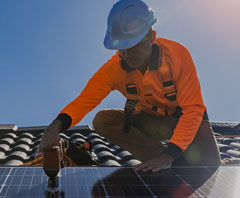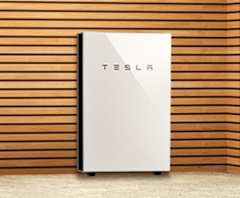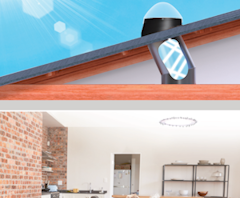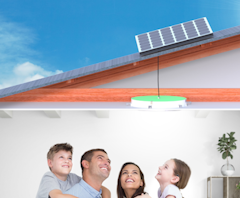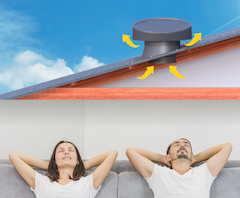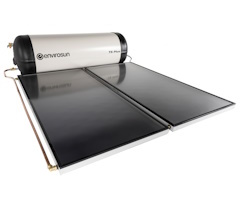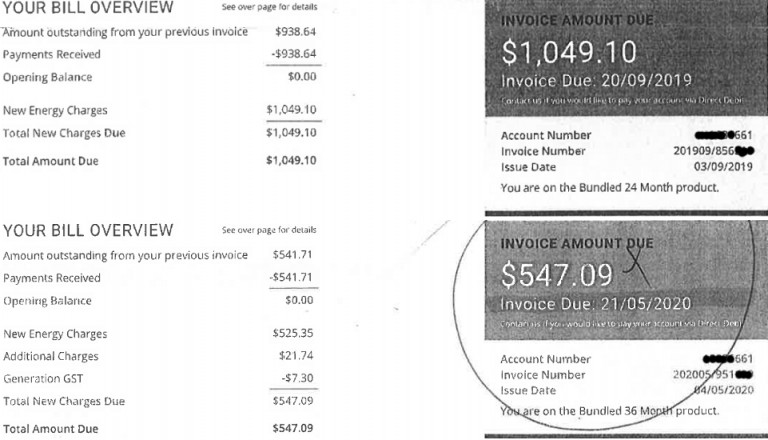Solar energy is a great way to save money and slash your power bill. However, most residential solar systems without solar battery storage only power your home during daylight hours. Fortunately, there are ways to reduce your energy usage at night and save even more.
Explaining On-Grid Solar Systems
Most solar installed in Australia is “on-grid” solar. When you have an on-grid solar power system, you are still connected to the main electricity grid. Solar energy produced from your panels needs to be used immediately, as your solar inverter converts it to standard electricity. If you produce more than you use, the excess is exported back to the main electricity grid.
This means at night, or other times when your system isn’t producing enough solar energy, you’ll draw electricity from the main grid. Your electricity retailer will charge you for the electricity provided.
Tips For Reducing Your Power Usage At Night
Needless to say, it’s wise to use more power during the day – when it’s free from the sun – and decrease your consumption at night when you need to pay for it. Here are some tips to help you get the most savings out of your solar energy system.
Schedule Appliances To Work During The Day
Many household appliances such as dishwashers and washing machines can be programmed to start at a future time. Coincidentally, these appliances are some of the most power-hungry in the home. So, rather than putting the dishwasher and washing machine on in the morning or night, set them to start during the middle of the day. That way, solar energy will power them completely, as long as weather conditions are optimal.
If you’re concerned about not generating enough power during the day, make sure your scheduled appliances aren’t running all at the same time. This should ensure you don’t pay a cent for power during the day.
Turn Off Non-Essential Appliances At Night
If you’re not using appliances during the night, turn them off. It sounds simple, but so many people neglect to do this, and they’re missing out on energy savings. Remember, you pay for all the electricity you use at night, so being careful with consumption can save plenty of dollars.
If you don’t need to run something during the evening, don’t. Wait until daylight when your solar panels can give you all the free power you need.
Use Showers Earlier In The Day
Hot water is always a killer when it comes to the monthly energy bill. Many people love having a shower in the evening before bed, but this is the least economical way to use your shower. The same goes for early in the morning when your solar system isn’t producing energy yet. Of course, when you shower is largely guided by your work schedule. If you work from home, try to wait until after 10am.
If you’re a fan of the evening shower and you get home from work around 5-6pm, in summer, your solar system may still be producing energy. Take that evening shower as soon as you get home, and the hot water may be powered with free solar energy.
Turn Off Air Conditioners At Night
It’s always tempting to leave heaters or air conditioners on overnight. It’s nice to wake up to a warm home in winter or a cool home in summer. But unfortunately, even the most economical air conditioners are likely to be the most expensive appliances in the house.
One smart way to manage cooling and heating is to leave the systems running through the day and turn them off when the sun goes down. That way, you’ll come home from work to a nice warm house, and assuming you have good insulation, your home should stay at a comfortable temperature overnight.
Make The Solar Switch Today
If you want to start saving money, there’s no better time than now to switch to solar energy. The Federal Government offers the Small-scale Renewable Energy Scheme, which can drastically reduce the upfront cost of an NSW solar installation. SolarBright can give you all the advice you need, and we only stock the most reliable, high-performing solar energy products. Book a free consultation today and find out how much money you could save every year with solar energy.
